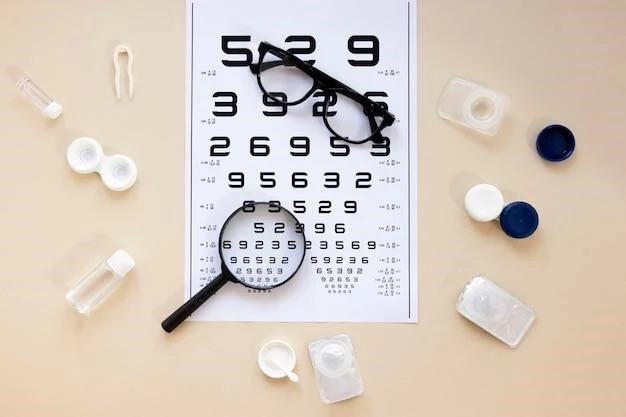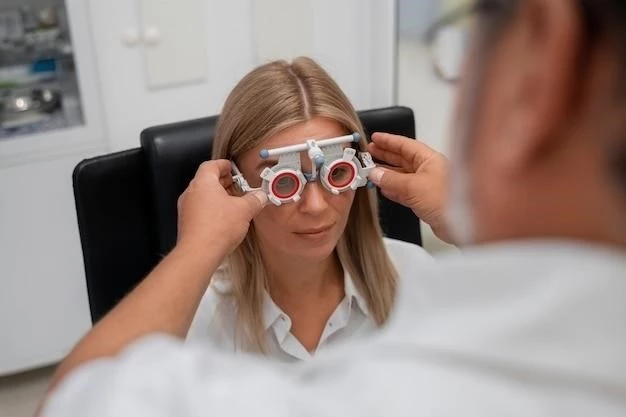Introduction
Some studies have found that about 1 in 4 individuals with high myopia progress to a type of myopia called pathologic myopia. This condition involves the abnormal elongation of the eyeball, leading to severe nearsightedness.
Definition of Severe Myopia
Severe myopia, also known as high myopia, is characterized by a refractive error of -6.00 diopters or more. It is considered an extreme form of nearsightedness and may lead to various eye complications if left untreated. Individuals with severe myopia have an increased risk of developing issues such as retinal detachment, glaucoma, and cataracts.
Causes of Severe Myopia
The development of severe myopia can be influenced by both genetic factors inherited from parents and environmental influences such as excessive screen time and lack of outdoor activities. These factors can contribute to the abnormal elongation of the eyeball, leading to severe nearsightedness.
Genetics and Hereditary Factors
The risk of severe myopia is greater in children of nearsighted parents due to the complex genetics of myopia. Degenerative myopia, also known as pathologic myopia, is a rare type usually inherited from parents, leading to severe nearsightedness. Understanding these genetic factors can help in early detection and management of severe myopia.
Environmental Influences
Factors such as excessive screen time and limited outdoor activities can contribute to the development of severe myopia. Prolonged near work activities and inadequate exposure to natural light may impact the progression of nearsightedness. It is essential to maintain a balance between screen time and outdoor time to reduce the risk of severe myopia.

Risk Factors Associated with Severe Myopia
Studies have shown that individuals with high myopia are at risk of developing pathologic myopia, which can lead to severe nearsightedness. Understanding these risks is crucial for early detection and prevention.
Progression to Pathologic Myopia
Some individuals with high myopia may progress to pathologic myopia, characterized by the abnormal elongation of the eyeball. This degenerative form of myopia can result in severe nearsightedness and potentially lead to various eye complications if not properly managed.
Development of Other Eye Conditions
Severe myopia, especially if left untreated, can lead to various eye complications such as retinal detachment, glaucoma, cataracts, and retinal tears. Monitoring the progression of myopia and seeking timely intervention are crucial in preventing these vision-threatening conditions.
Diagnosis of Severe Myopia
Myopia can be diagnosed through a basic eye exam and visual acuity test. Regular check-ups are essential for detecting and monitoring severe nearsightedness.
Basic Eye Exam
Diagnosing severe myopia typically involves a basic eye exam where your eye care specialist assesses your visual health. This exam may include evaluating your medical history, conducting visual acuity tests, and examining the structures of your eye to detect any signs of severe nearsightedness.
Visual Acuity Test
A visual acuity test is commonly used to assess the sharpness of your vision at a distance. This test helps determine if you have severe myopia by measuring the clarity of your vision and can aid in diagnosing other potential eye conditions associated with high levels of nearsightedness.
Symptoms of Severe Myopia
Nearsightedness and farsightedness can lead to complications like headaches and eye strain. Seek medical advice if experiencing such symptoms.
Near- and Far-Sightedness
Severe myopia presents challenges in focusing on objects at a distance, leading to blurry vision. Individuals may also experience farsightedness where nearby objects appear unclear. These visual issues can impact daily activities and quality of life, underscoring the importance of early diagnosis and appropriate corrective measures.
Complications such as Headaches and Eye Strain
Severe myopia can be associated with symptoms like headaches and eye strain due to the difficulty in focusing on objects. Identifying these signs early and seeking appropriate eye care can help manage these discomforts effectively.
Treatment Options for Severe Myopia
High myopia can be managed with glasses, contact lenses, or surgical interventions. Early diagnosis and treatment play a crucial role in preserving vision and preventing further complications associated with severe nearsightedness.
Glasses and Contact Lenses
Glasses and contact lenses are common methods used to correct severe myopia. These optical aids help improve vision by compensating for the refractive error in the eye. Regular eye examinations and proper prescription updates are crucial in managing high myopia effectively.
Surgical Interventions
For individuals with severe myopia, surgical interventions can be considered to correct vision irregularities. Procedures such as refractive surgeries, implantable collamer lenses, or phakic intraocular lenses may be recommended by eye care specialists to address high levels of nearsightedness effectively. It is crucial to consult with an ophthalmologist to determine the most suitable surgical option based on individual needs and eye health.
Management of Severe Myopia
Orthokeratology is an effective treatment method for severe myopia. Regular eye check-ups and monitoring are crucial for maintaining eye health and managing high levels of nearsightedness.
Orthokeratology as a Treatment Method
Orthokeratology, or Ortho-K, is a non-surgical procedure involving specially designed contact lenses to reshape the cornea and correct severe myopia. This method can provide improved vision without the need for glasses or daytime contact lenses. Regular follow-ups with your eye care provider are essential for monitoring the effectiveness of Ortho-K in managing high levels of nearsightedness.
Regular Eye Check-ups and Monitoring
Regular eye check-ups are essential for individuals with severe myopia to monitor their eye health and detect any changes in vision. Monitoring the progression of nearsightedness through routine visits to an eye care professional helps in timely intervention and appropriate management strategies to maintain good vision health.
Complications of Severe Myopia
Severe nearsightedness, known as high myopia, can lead to vision-threatening conditions like retinal detachment, glaucoma, and cataracts. These complications require careful management to preserve eye health.
Retinal Detachment
Severe myopia poses a risk for retinal detachment, a serious condition where the retina separates from the back of the eye. Timely intervention and regular eye examinations are essential to monitor and address this potential complication associated with high levels of nearsightedness.
Glaucoma and Cataracts
Individuals with high myopia are at an increased risk of developing eye conditions, such as glaucoma and cataracts, which can significantly impact vision. Regular monitoring and early intervention are crucial in managing these complications associated with severe nearsightedness.

Prevention Strategies for Severe Myopia
Limiting screen time and near work activities, combined with spending more time outdoors, can help reduce the risk of developing severe myopia. These simple strategies play a vital role in maintaining good eye health and preventing vision-related complications.
Limiting Screen Time and Near Work Activities
Reducing screen time and activities that involve close-up work can help alleviate the progression of severe myopia. Limiting prolonged periods of focusing on screens and books may lower the strain on the eyes and contribute to maintaining better vision health in the long run.
Outdoor Time and Eye Health
Spending time outdoors is beneficial for eye health, particularly in reducing the progression of severe myopia. Sunlight exposure and engaging in outdoor activities may help mitigate the risk of developing high levels of nearsightedness. Encouraging outdoor time as part of a daily routine can contribute to overall eye wellness.
Research and Advancements in Severe Myopia
Global trends show a rise in myopia incidence, especially in young populations due to lifestyle changes. Technological interventions focusing on myopia control are being developed to address this growing concern. Stay informed and prioritize eye health to combat the increasing prevalence of severe myopia.
Global Trends in Myopia Incidence
Recent data indicates a rise in myopia incidence globally, especially among young individuals, attributed to lifestyle changes and increased screen time. Technological interventions focusing on myopia control are being developed to address this growing concern. It’s essential to stay informed and prioritize eye health to combat the increasing prevalence of severe myopia.
Technological Interventions for Myopia Control
Advancements in technology have led to the development of innovative interventions for myopia control. These methods aim to slow down the progression of severe myopia, particularly in young individuals. Keeping abreast of such technological advancements and discussing them with your eye care provider can help in managing high levels of nearsightedness effectively.
Conclusion
Understanding the complexities of severe myopia and staying informed about advancements in treatment and prevention strategies are vital in preserving eye health; Emphasizing early detection and management is key to safeguarding against the risks associated with high levels of nearsightedness.
Importance of Early Detection and Management
Early detection and management of severe myopia are crucial in preventing vision-threatening complications. Regular eye check-ups, timely intervention, and adherence to treatment recommendations can help preserve eye health and minimize the risks associated with high levels of nearsightedness.
